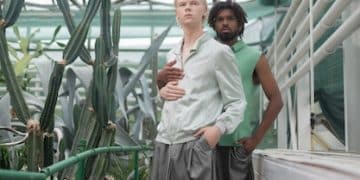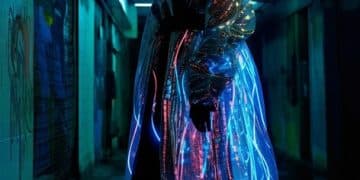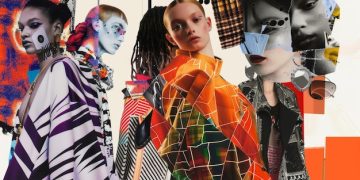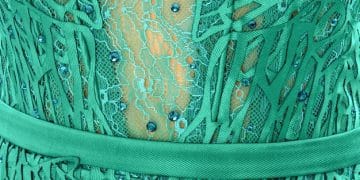Underground Fashion Fabrics: Sustainable Materials for 2025
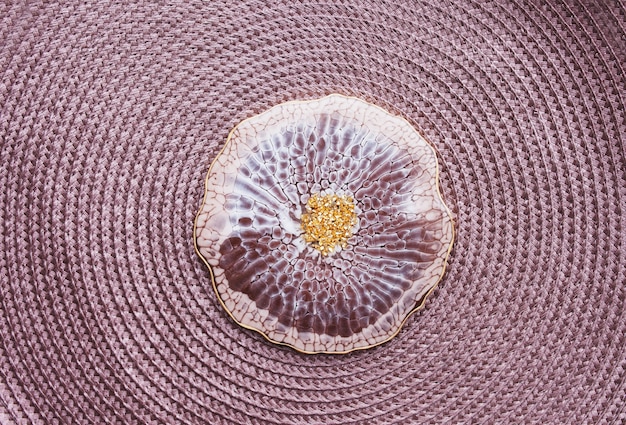
Underground fashion fabrics are evolving rapidly, with sustainable materials like Piñatex, mushroom leather, and recycled ocean plastic poised to dominate the scene in 2025, offering eco-conscious alternatives for designers and consumers.
As the fashion industry grapples with its environmental impact, the **Underground Fashion Fabrics: Which Sustainable Materials Will Dominate 2025?** is a question at the forefront of designers’ and consumers’ minds alike. It’s time to explore the innovative, eco-conscious materials that are reshaping the future of fashion.
Sustainable Revolution: The Future of Underground Fashion Fabrics
The underground fashion scene, known for its avant-garde designs and rebellious spirit, is increasingly embracing sustainability. The shift towards eco-friendly materials isn’t just a trend; it’s a fundamental change in how fashion is conceived and produced. As we look towards 2025, several sustainable fabrics are set to take center stage.
Let’s delve into which particular sustainable materials will dominate this movement in coming years, examining their unique properties, environmental benefits, and potential applications in the underground fashion world.
The Rise of Eco-Conscious Consumers
A growing awareness of the environmental and social impacts of fast fashion has fueled the demand for sustainable alternatives. Consumers are now more informed and actively seek out brands that prioritize ethical and eco-friendly practices.
- Increased Demand: Consumers are willing to pay a premium for sustainable products.
- Transparency: Customers are seeking brands that are open about their supply chains and production processes.
- Social Media Influence: Social media platforms are amplifying the voices of eco-conscious influencers and promoting sustainable fashion brands.
This shift in consumer behavior is driving the fashion industry to adopt more sustainable practices, and underground fashion is no exception.
Piñatex: Pineapple Leaf Fiber
Piñatex is an innovative material made from pineapple leaf fibers, a byproduct of pineapple harvests. This ingenious textile offers a sustainable alternative to traditional leather, reducing waste and minimizing the environmental impact associated with animal agriculture. Piñatex is durable, versatile, and can be used in a wide range of applications, from clothing and accessories to upholstery.
Piñatex offers a tantalizing combination of environmental credentials and aesthetic versatility. It’s no surprise that designers have been rapidly integrating it into their collections.
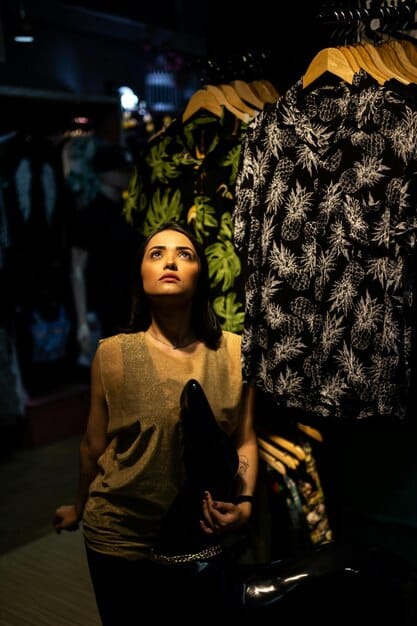
Benefits of Piñatex
Piñatex is not only a sustainable alternative but also boasts several other advantages.
- Waste Reduction: It utilizes agricultural waste, turning what would otherwise be discarded into a valuable resource.
- Environmental Impact: Lower water and land usage compared to traditional leather production.
- Economic Opportunities: Provides additional income for pineapple farmers.
Its unique texture and versatility make it a favorite among designers looking to create innovative and environmentally responsible pieces.
The material also proves a talking point: educating consumers about the possibilities that exist beyond conventional leather products.
Mushroom Leather (Mylo): A Fungal Innovation
Mushroom leather, often referred to by brand names like Mylo, is a bio-based material grown from mycelium, the root structure of mushrooms. This innovative alternative to animal leather is rapidly gaining popularity due to its sustainability and unique properties. Mushroom leather is soft, flexible, and can be customized to mimic the look and feel of traditional leather.
Mushroom leather offers a glimpse into a future where fashion draws inspiration from the natural world and prioritizes sustainability.
The Science Behind Mylo
Mylo is created through a process called vertical agriculture, where mycelium is grown in a controlled environment. This process is highly efficient and requires minimal resources compared to traditional leather production.
- Rapid Growth: Mycelium grows quickly, producing large quantities of material in a short period.
- Controlled Environment: The growth process can be precisely controlled to achieve desired material properties.
- Customizable: Mylo can be dyed, textured, and finished to meet specific design requirements.
The rapid growth and customizable nature of Mylo make it an attractive option for designers seeking sustainable and innovative materials.
Mushroom leather presents the chance to revolutionize how we perceive and produce fashion materials and accessories.
Recycled Ocean Plastic: Turning Waste into Fashion
Recycled ocean plastic is made from plastic waste collected from oceans and coastlines. This material is transformed into high-quality fabrics that can be used in a variety of fashion applications. By utilizing recycled ocean plastic, the fashion industry can help clean up our oceans, reduce waste, and create sustainable products.
Recycling ocean plastic is one of the most exciting and impactful developments in sustainable fashion, since it actively addresses some of the planet’s most pressing ecological stresses.
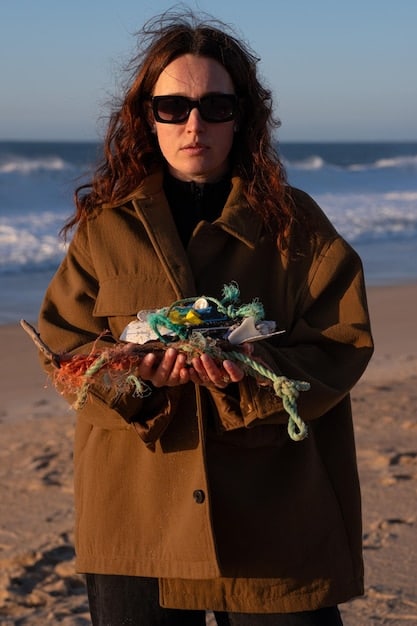
Benefits of Recycled Ocean Plastic
Using recycled ocean plastic offers numerous environmental and economic benefits.
- Ocean Cleanup: Removes plastic waste from marine environments, protecting wildlife and ecosystems.
- Waste Reduction: Diverts plastic from landfills and reduces the demand for virgin plastic.
- Versatile Applications: Can be used to create a wide range of fabrics, from sportswear to high-fashion garments.
The use of recycled ocean plastic showcases the potential of circular economy principles in the fashion industry.
The success of recycled ocean plastics in the fashion sector could potentially influence changes on other large scale recycling projects in coming years.
Hemp Fabric: Durable and Sustainable
Hemp fabric is made from the fibers of the hemp plant, a highly sustainable crop that requires minimal water and pesticides to grow. Hemp is one of the strongest and most durable natural fibers and its properties translate into fabrics that are resistant to wear and tear. Hemp fabrics are also breathable, absorbent, and become softer with each wash.
Hemp is already proving its worth and is set to cement its position as one of the most ecologically sound textiles available.
The Sustainability of Hemp
Hemp’s unique properties make it a highly sustainable alternative to conventional materials like cotton.
- Low Water Usage: Hemp requires significantly less water than cotton, reducing water stress on agricultural systems.
- Pesticide-Free: Hemp is naturally resistant to pests, eliminating the need for harmful pesticides.
- Soil Health: Hemp improves soil health by replenishing nutrients and preventing erosion.
These combined benefits make hemp a popular choice for brands committed to sustainable practices.
Hemp demonstrates that it is a reliable, versatile, as well as eco-friendly choice for conscientious creatives.
Organic Cotton: A Natural Alternative
Organic cotton is grown without the use of synthetic pesticides, herbicides, or genetically modified seeds. This method of cultivation promotes soil health, conserves water, and reduces exposure to harmful chemicals. Organic cotton is a softer, more sustainable alternative to conventional cotton, making it an excellent choice for environmentally conscious designers and consumers.
While organic cotton is not a new material, its popularity in the underground fashion scene signals a return to conscious consumption and an appreciation for natural processes.
Benefits of Organic Cotton
Choosing organic cotton offers numerous environmental and health benefits.
- Reduced Chemical Exposure: Eliminates the use of harmful pesticides and herbicides.
- Water Conservation: Requires less water than conventional cotton production.
- Improved Soil Health: Promotes healthy soil ecosystems.
More and more brands are choosing organic cotton: a signal that the sustainable approach has gained traction.
Choosing organic may encourage further growth in what is a very critical area to fashion production and retail.
Innovative Dyeing Techniques: Eco-Friendly Colors
Traditional dyeing processes often involve the use of harmful chemicals and large amounts of water, contributing to pollution and environmental degradation. Innovative dyeing techniques, such as waterless dyeing and natural dyes, offer sustainable alternatives that minimize environmental impact. Waterless dyeing uses supercritical carbon dioxide to transfer dyes onto fabrics, eliminating the need for water. Natural dyes are derived from plants, minerals, and other natural sources, providing vibrant and eco-friendly colors.
The embrace of eco-friendly dyeing techniques is a critical part of creating genuinely sustainable and ethical fashion practices.
Examples of Eco-Friendly Dyeing Techniques
These dyeing methods are changing the landscape of textile production.
- Waterless Dyeing: Reduces water consumption and eliminates wastewater pollution.
- Natural Dyes: Uses renewable resources and reduces reliance on synthetic chemicals.
- Digital Printing: Minimizes waste by precisely applying dyes only where needed.
These techniques not only reduce environmental impact but also allow for greater creativity and innovation in design.
With more support eco-friendly dyeing techniques are bound to grow the sustainable and ethical fashion sector.
| Key Point | Brief Description |
|---|---|
| ♻️ Sustainable Fabrics | Eco-friendly alternatives like Piñatex, mushroom leather, and recycled plastic. |
| 🌱 Natural Materials | Hemp and organic cotton reduce environmental impact. |
| 💦 Dyeing Techniques | Waterless and natural dyeing methods for eco-friendly colors. |
| 🌊 Ocean Plastic | Recycled plastic from oceans, reducing sea pollution. |
FAQ
▼
Piñatex is a sustainable alternative to leather made from pineapple leaf fibers, an agricultural waste product, offering a low-impact material for fashion.
▼
Mushroom leather, like Mylo, is bio-based, fast-growing, and customizable, making it an eco-friendly alternative to animal leather in various applications.
▼
Recycled ocean plastic reduces waste, cleans up marine environments, and provides a sustainable material for creating a wide range of fashion products.
▼
Hemp requires less water, fewer pesticides, and improves soil health, making it a highly sustainable and durable material for fashion.
▼
Eco-friendly dyeing techniques, such as waterless dyeing and natural dyes, minimize water consumption, reduce chemical use, and lower overall environmental impact.
Conclusion
The underground fashion scene is poised for a sustainable revolution in 2025, driven by innovative materials like Piñatex, mushroom leather, recycled ocean plastic, hemp, and organic cotton. By embracing these eco-friendly alternatives and innovative dyeing techniques, designers and consumers can collectively contribute to a more sustainable and ethical future for fashion.

